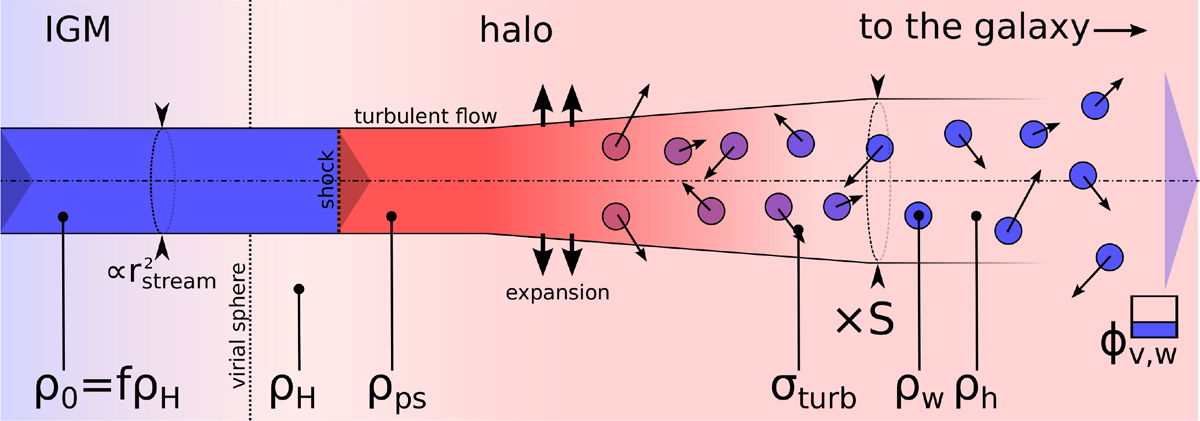Fig. 1

Sketch of our phenomenological picture of flows of gas passing through a virial shock. The initial inflowing gas (in blue) is overdense relative to the halo gas at the boundary by a factor f (=ρ0 ∕ρH or the stream density divided by the density of the ambient halo gas at the virial radius), shocks at the boundary between the intergalactic medium (labeled “IGM”) and the hot halo gas (labeled “halo”). The persistent virial shock and the higher pressure of the post-shock gas compared to the ambient halo gas, allows the flow to expand after being shocked (labeled “expansion”). If certain conditions are met, the post-shock gas becomes unstable, fragmenting to form a biphasic medium. The fragmentation enables a fraction of the initial momentumand energy of the stream to be captured as turbulent clouds of warm gas with a dispersion, σturb, and a volume-filling factor, ϕv,w. If the level of turbulence is high enough, the clouds move beyond the initial radius of the stream, decollimating the flow. Eventually, the hot post-shock gas mixes with the ambient halo gas which prevents it from cooling further. See text and the Appendix for definitions of the variables.
Current usage metrics show cumulative count of Article Views (full-text article views including HTML views, PDF and ePub downloads, according to the available data) and Abstracts Views on Vision4Press platform.
Data correspond to usage on the plateform after 2015. The current usage metrics is available 48-96 hours after online publication and is updated daily on week days.
Initial download of the metrics may take a while.


